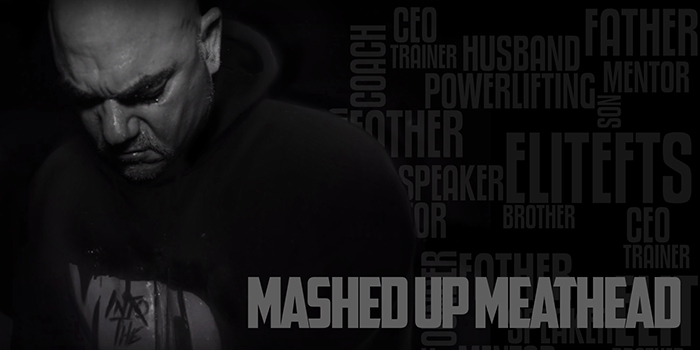
My training History: I trained less than one year before competing in my first powerlifting meet as a teenager back in 1983. Before leaving the sport partially due to injuries in 2005 I achieved my elitefts status in the 198,220,242,275 & 308 weight class. Throughout these years I did have a 3 year run in the bodybuilding world. I have degenerative joint disease, have had two shoulder surgeries (right shoulder now needs replaced), one full hip replacement, knee surgery, and herniation's in all three regions of my spine, Bone spurs (all joints). I can't even begin to list the number of muscle tears I have had, surgical and non surgical. I am "The Mashed Up Meathead" and this is my story.
You can find my training log archives HERE and my most current training log posts HERE.
My best lifts are behind be but my best training is yet to come.
* Unless otherwise noted the tempo of the work sets is about 1/2 of what most would consider normal. In most cases, if I did the set with normal temp what I fail at with 8-10 reps in training I could do for 20 reps with a normal tempo. This is to keep the joint stress down while increase the stress on the muscle. I have found this to work best for me provided the conditions listed in my training history above.
Tsunami bar pull-downs.
Five warm-up sets of 8 to 10 reps, then five work sets of 8 to 12 reps, each set to failure.
Tsunami grips. Double-D style pull-downs.
Two warm-up sets, four work sets of 8 to 12 with each set taken to failure.
Wide double-D handle, low rows.
Two warm-up sets, five sets 8 to 12 reps. All sets to failure.
Prone bench rows using kettle bells.
These are performed with the kettle bells to be able to pull your elbows higher than what you typically could if you were using a dumbbell or a barbell. No warm-up sets were needed. Five sets of 8 to 10 repetitions. All sets to failure.
Short tsunami bar straight-arm pull-downs.
Using a cable machine, what you want to do with this exercise is use a short tsunami bar and then try to bend the bar. By bending the bar, you're going to contract your lats a little bit harder than you typically would. Then you're going to step back and do a motion similar to what a pull- over would be, but you're not going to have the same range of motion of what a pull- over would. The reason I use this instead of a pull-over is because my shoulders can't handle the range of motion of a pull-over, but I can pre-set the range of motion of this to be able to get a good contraction and also a decent range of motion to be able to feel the lats work and actually to open the shoulders up a little bit.
Hise shrugs.
This is standing shoulder raises using a standing calf machine. Six sets of 12 to 15 reps. None of the sets were taken to failure. Each set was probably 10-15 reps shy of what failure would be.
Front and back neck work using a light band.
Three sets, 15 reps, each direction.
Next exercises:
Hanging neutral grip chins with 30 pound.
Using the hammer row machine, just a loaded stretch for a 40 count. That was it.








